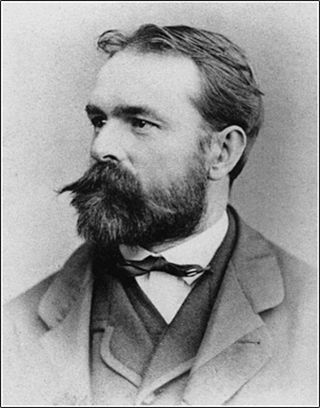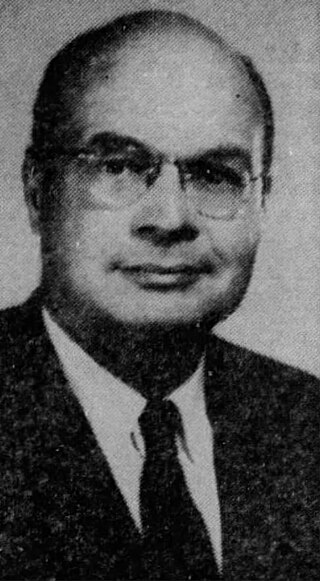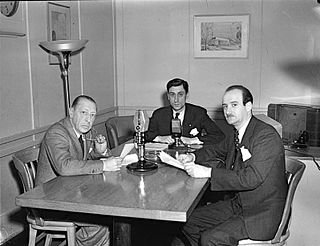Related Research Articles
In music, variation is a formal technique where material is repeated in an altered form. The changes may involve melody, rhythm, harmony, counterpoint, timbre, orchestration or any combination of these.

Josef Gabriel Rheinberger was an organist and composer from Liechtenstein, residing in Bavaria for most of his life. As court conductor in Munich, he was responsible for the music in the royal chapel. He is known for sacred music, works for organ and vocal works, such as masses, a Christmas cantata and the motet Abendlied; he also composed two operas and three singspiele, incidental music, secular choral music, two symphonies and other instrumental works, chamber music, and works for organ.

Nikolai Karlovich Medtner was a Russian composer and virtuoso pianist. After a period of comparative obscurity in the 25 years immediately after his death, he is now becoming recognized as one of the most significant Russian composers for the piano.
Sergei Prokofiev began his Violin Concerto No. 1 in D major, Op. 19, as a concertino in 1915 but soon abandoned it to work on his opera The Gambler. He returned to the concerto in the summer of 1917. It was premiered on October 18, 1923 at the Paris Opera with Marcel Darrieux playing the violin part and the Paris Opera Orchestra conducted by Serge Koussevitzky. Igor Stravinsky made his debut as conductor at the same concert, conducting the first performance of his own Octet for Wind Instruments.
G major is a major scale based on G, with the pitches G, A, B, C, D, E, and F♯. Its key signature has one sharp. Its relative minor is E minor and its parallel minor is G minor.

Ingolf Dahl was a German-born American composer, pianist, conductor, and educator.
Vronsky & Babin were regarded by many as one of the foremost duo-piano teams of the twentieth century. Vitya Vronsky was born in the Crimean city of Yevpatoria, Russia. Victor Babin was born in Moscow, Russia. They both died in Cleveland, Ohio, United States.
Avner Dorman is an Israeli-born composer, educator and conductor.
Olli Mustonen is a Finnish pianist, conductor, and composer.

David Ezra Okonşar is a Turkish–Belgian pianist, composer, conductor, writer, and educator. He was previously known as "Mehmet Okonşar".

Igor Stravinsky wrote the Ebony Concerto in 1945 for the Woody Herman band known as the First Herd. It is one in a series of compositions commissioned by the bandleader/clarinetist featuring solo clarinet, and the score is dedicated to him. It was first performed on March 25, 1946 in Carnegie Hall in New York City, by Woody Herman's Band, conducted by Walter Hendl.

The Octet for wind instruments is a chamber music composition by Igor Stravinsky, completed in 1923.

The Concerto for Two Pianos is a composition by Russian composer Igor Stravinsky. It was finished on November 9, 1935 and, together with his Sonata for Two Pianos, is considered nowadays as one of his major compositions for piano during his neoclassical period. It was also Stravinsky's first work after becoming a French citizen.
The Piano Sonata, sometimes also referred to as Sonata for Piano or in its original French form, Sonate pour piano, is a 1924 piano sonata by Russian expatriate composer Igor Stravinsky.
Fantaisie for piano and orchestra (L.73/CD.72), is a composition for piano and orchestra by French composer Claude Debussy. It was composed between October 1889 and April 1890, but only received its first public performance in 1919, a year after Debussy's death. The work is dedicated to the pianist René Chansarel, who had been scheduled to play the solo part for the cancelled premiere in 1890.
The Piano Concerto in C-sharp minor, Op. 45, is a composition for solo piano and orchestra in four movements by the American composer Amy Beach. The work was composed between September 1898 and September 1899. It was first performed in Boston on April 7, 1900, with the composer as the soloist and the Boston Symphony Orchestra performing under the conductor Wilhelm Gericke. The composition is dedicated to the musician Teresa Carreño and was the first piano concerto by an American female composer.

Bluebird Pas de Deux is a 1941 arrangement for chamber orchestra of a short section of Pyotr Ilyich Tchaikovsky's The Sleeping Beauty composed by Igor Stravinsky. It was used in Lucia Chase's Bluebird ballet.
References
- 1 2 Richard Carpenter, Stravinsky: Sonata for Two Pianos. Allmusic website (Accessed 10 October 2011).
- ↑ Stravinsky: Music for Two Pianos: The Rite of Spring, Sonata, Concerto . Benjamin Frith and Peter Hill (pianos). Naxos 8.553386. Hong Kong: Naxos Records, 1996. Track listing on Naxos.com (Accessed 10 October 2011).]